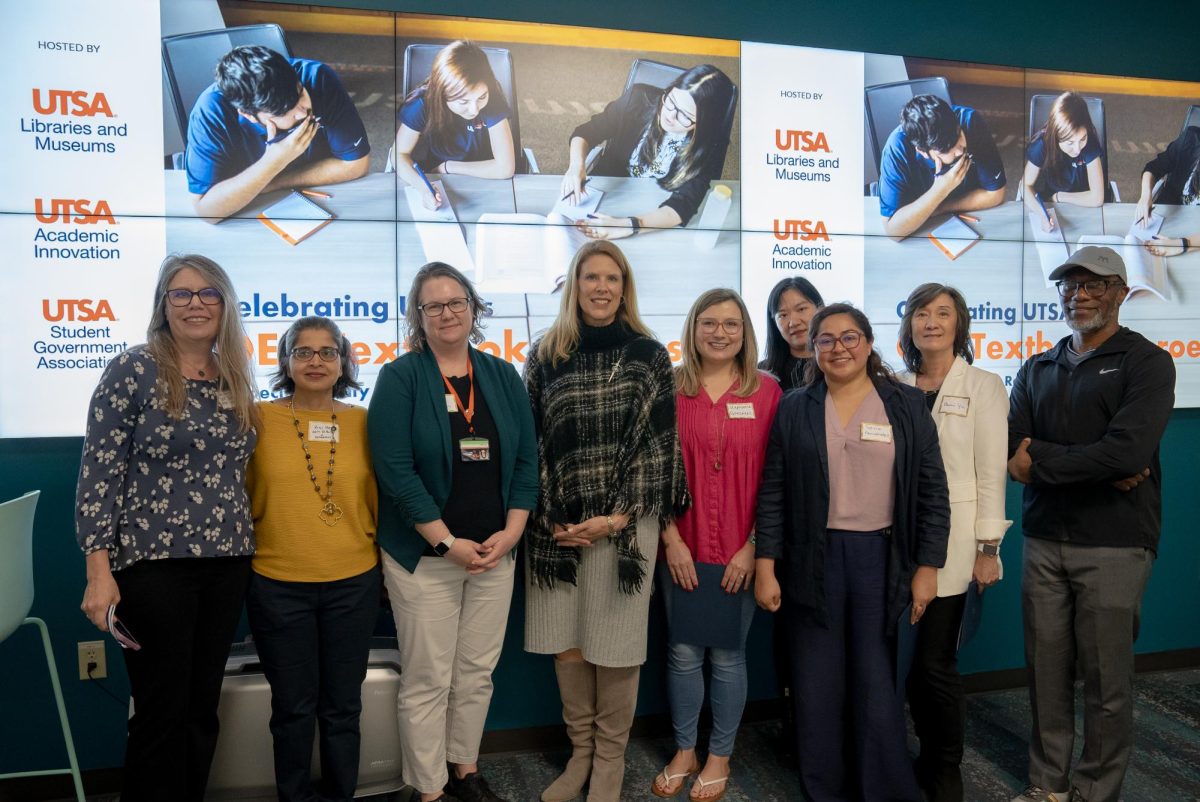UTSA Libraries and Academic Innovation met to commend the progress of their most recent initiatives involving Open Educational Resources (OER). OER aims to change the landscape of expensive educational materials on campus. In collaboration with the Student Government Association (SGA), the event was hosted to applaud faculty members who have won grants over the last two years through the Adopt-a-Textbook grant program.
Vice Provost and University Librarian, Dean Hendrix, opened the ceremony by verbally embracing the invited faculty and detailing their involvement in the initiative.
“Faculty are the lifeblood of this institution,” Hendrix said. “We are incredibly grateful that we have a lot of forward-thinking faculty in this room that care about the students. They care about our students and I think that goes a long way. When you have faculty that are engaged in students’ well-being it becomes a huge predictor in students’ success.”
“Myself, as chair of the UT Libraries Directors Group, will be presenting to the vice-chancellors on a pilot to use generative AI to mine OER to create ancillaries. We are going to present a proposal to UT systems for them to help us provide the infrastructure to write one of those big Department of [Education] grants.”
Hendrix finished by instilling confidence that grants are not the only form of progress being made.
“We need to offer these ancillary materials in an openly licensed way, and generative AI seems like a good way to go about it,” Hendrix explained. “We are just going to be saying to the UT system that this is a conversation that needs to continue and evolve.”
Vice Provost for Academic Innovation, Melissa Vito, followed Hendrix in briefing the audience on OER and its benefits for the UTSA community.
“When you think about higher education, it is a slow-moving force in terms of change,” Vito stated. “One of the areas that has actually been very disrupted over time is textbooks. 20 years ago, students were spending 30% more on academic resources than they are now, and that is because of things like textbook loan programs.”
“It is because of things like the 22 faculty members who have worked to develop OER and to change the way that things are being delivered to students,” Vito continued. “All of these things have not sacrificed the quality, but, instead, created more opportunities for faculty to do some different things when building OER and to reduce the cost for students.”
As the event progressed, Vito expressed that the OER initiative could not have happened without the help of faculty. She acknowledged their efforts and thanked them for their continued enthusiasm toward the initiative.
A few more speakers took the stage to share the same sentiment. Additionally, a timeline of the start of the initiative was given.
“We actually got with SGA President Zachary and the rest of SGA leadership last summer,” UTSA Open Education Coordinator DeAnn Ivie said. “We started those conversations [about OER] last summer and planned all of the different things that we could do to help raise OER awareness here at UTSA.”
“We worked with Zach and SGA very closely to create a thank you video for our donors,” Ivie said. “We are so grateful for our donors and all of their support.”
SGA has been pushing for UTSA to adopt OER as a new initiative for the past year. Through the weekly meetings, they worked toward promoting student awareness around the initiative. President Nepote took a moment to share the responses they have received.
“We have heard from people how through OER they were able to afford other things,” Nepote said. “They were able to just be a student, they didn’t have to worry about affording school resources.”
Nepote added, “The faculty’s work is very, very selfless and I can understand that it may seem unappreciated, but it really does make a change and an impact. I am really grateful to have worked with you all to advocate for this need at [the] UT system. We will continue to advocate for more administrative support for the faculty involved so that they can also continue to make those OER a little more accessible.”








